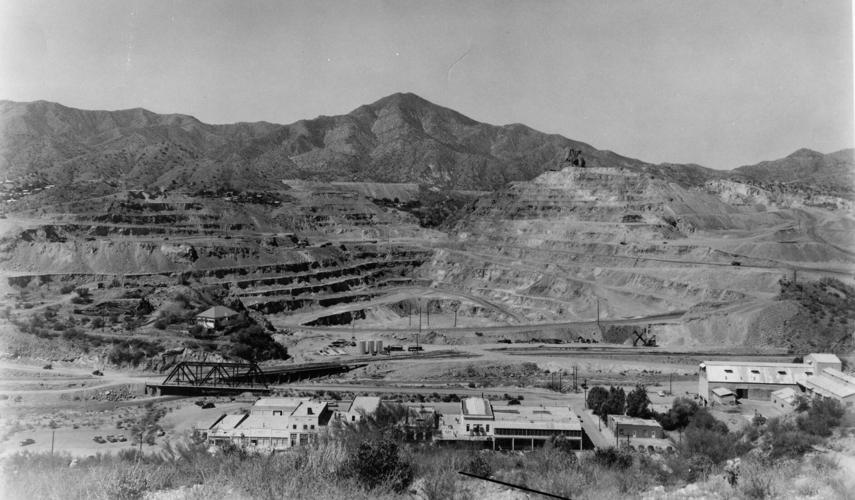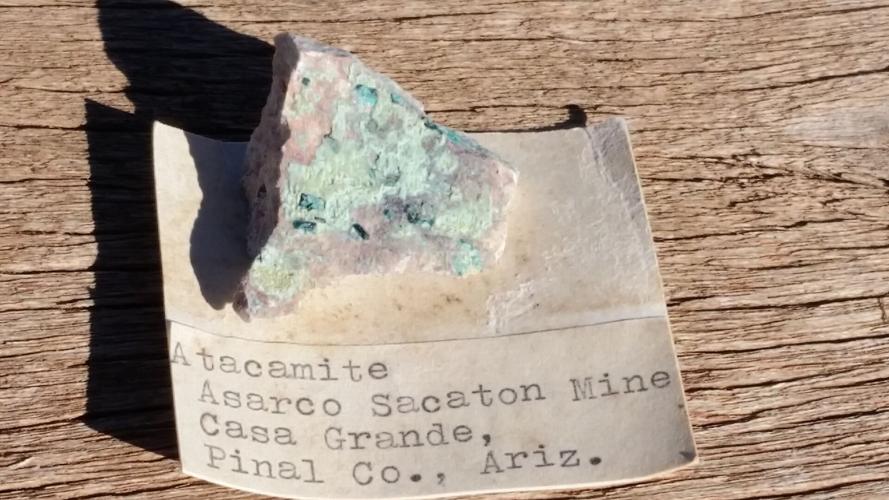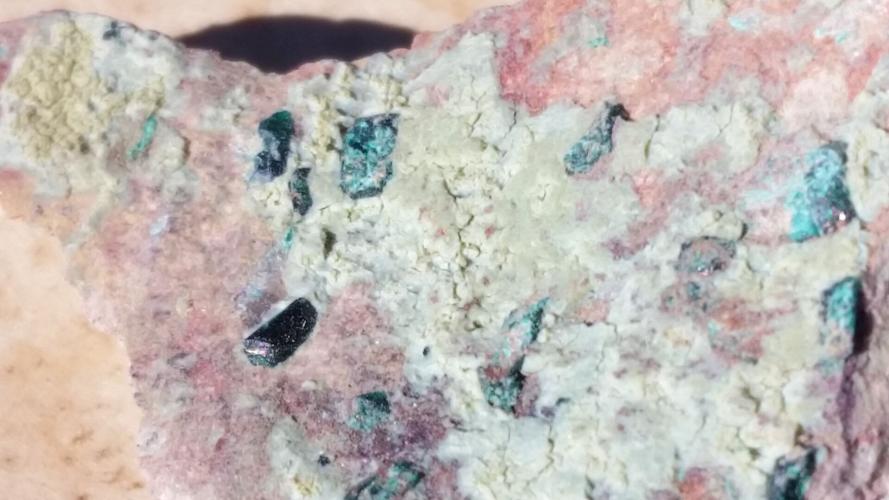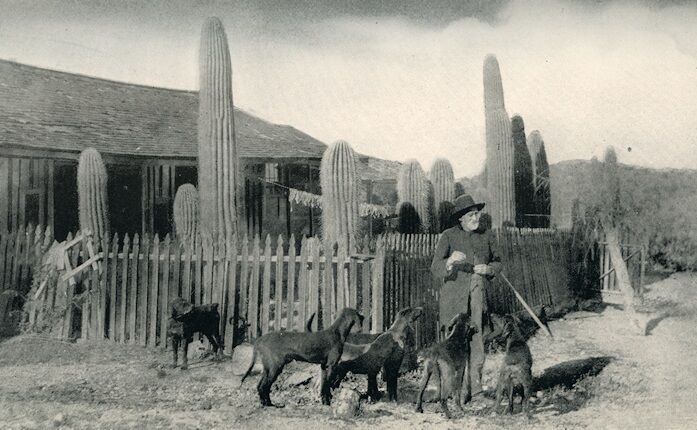Mining has played a significant role in the history of Pinal County. Early mining dates back more than 1,000 years, as Native Americans mined chrysocolla using large diabase hammers for jewelry and trade.
More concentrated and successful mining efforts followed, beginning with the Silver King Mine. It was discovered by an Army soldier named Sullivan in 1873 and rediscovered two years later by a mining party led by Mason, Benjamin Regan, William H. Long and Isaac Copeland, who inaugurated it the Pioneer mining district.
The Silver King Mine became known for its exceptionally rich ore. A steadfast producer until implementation of the Sherman Act, which demonetized silver in 1893, the mine’s total production from 1875 to its decline in the 1920s was around $6.5 million in period values. By that time it reached a depth of 714 feet.
The Ray Mine was originally worked by the Mineral Creek Mining Co. in 1880 and greatly improved by Daniel C. Jackling under his organization of the Ray Consolidated Copper Co. It conducted extensive churn drilling and underground exploration with emphasis on shrinkage and block caving methods.
By 1955, the mine converted to open pit methods. At present, the Ray Mine produces 250,000 tons of ore daily. Concentrates have been sent to the Asarco smelter at Hayden for 110 years. At 1,000 feet in height, the smelter is the tallest free-standing structure in Arizona.

Miners at Cave In at San Manuel Mine.
Other successes included the Tiger Mine and the San Manuel Mine. The former is known for a wide variety of mineral specimens including the lead tungstate chloride “pinalite” christened after the county. Formed late in the oxidation processes, it was discovered at the Tiger Mine, which is the only known locality for this mineral. It occurs as isolated crystals and sprays in irregular cavities.
Nearby, the San Manuel disseminated copper deposit was credited as having been the largest underground copper mining operation in the world.
The county also had mines that were not so prosperous. Tom Jeffords, a renowned Native American agent and close friend of Cochise, attempted to develop several silver mines in the Owl Head District. These included the Apache Mines previously worked by Native Americans and prospectors. A total value of $130,000 worth of silver was removed prior to 1900.
The Florence Lead Silver Mine in the Tortilla Mountains, Ripsey Mining District, was developed in the late 1920s. A fissure vein in limestone and quartzite, the mine was more of a promotion by an insolvent Boston company and not developed by an experienced operator.
Consisting of a several hundred foot tunnel, it proved disappointing as only a few pockets or shoots of good ore in the form of silver chlorides were found. A documented 2,269 wet tons of ore valued at 55 ounces of silver and $1.00 in gold with some lead and copper values were shipped.

A small cabinet specimen of atacamite from the Sacaton Mine.
Asarco operated the Sacaton open pit copper mine from 1972 to 1984. New owner Elim Mining Inc. rechristened it the Cactus Mine.
Earlier this year, Unmanned Aerial Vehicles or UAV’s including a Cessna 172 operated by Synergy Geomatics were sent to map and survey the 2,400-acre open pit mine and collect a gallon of bright green alkaline water at the base of the 1,500-foot deep pit for chemical analysis.
Access to the pit proved challenging with erosion of the benches impeding travel. To compensate, two drones were used, one equipped with a water-sampling bailer and another with a high definition camera to navigate the first drone to water and collect imagery. The successful operation took four trips lasting less than 45 minutes.
Perhaps the most important mining venture in recent years is the Resolution Copper Mine. Both Rio Tinto and BHP companies have a $2 billion interest in the development and permitting process of the mine, which is currently working through an extensive permitting process with the federal government. The mine, averaging 1.5% copper, will reach 7,000 feet below the earth’s surface. Estimated production may surpass 40 billion pounds of copper extracted over the course of a projected mine life of 40 years.
The Florence area has been known for a lucrative copper deposit that has yet to be developed. Hidden for many years by an alluvial layer, it took multiple sessions of diamond drilling to reveal copper oxide mineralization undertaken by the Continental Oil Company (Conoco). Underground mining recovered 31,700 tons of oxide materials and 16,900 tons of sulfide material.
Magma Copper Co. acquired the property in the 1990s and determined through a feasibility study the best option to recover copper was through in-situ leaching and SX-EW (solvent extraction and electrowinning).
Mineral recovery through in-situ mining is less impactful to the environment than regular mining processes with no open cuts, waste dumps, tailings or ore removal. It involves dissolving copper below the surface into a liquid and pumping it to the surface afterward.
The mine is currently owned by Taseko Mines Limited, which is involved in the permitting process to bring the mine into production. Projected life of the mine is 20 years with an annual production of 85 million pounds of copper.
As of 2021, more than 544 registered mines are known to exist in Pinal County. Pinal County will no doubt continue to develop its mineral resources over the next decade and beyond as it has done in the past 150 years, serving to meet the growing need worldwide for copper production.

Magnified dark green crystal of atacamite from the Sacaton Mine.

An orange-red, translucent thumbnail wulfenite crystal in quartz vug from Florence Lead & Silver Mine magnified by jewelers loupe.

Map depicting mentioned mining localities in Pinal County

Tom Jeffords engages his dogs on his property at Owl Head Buttes.











